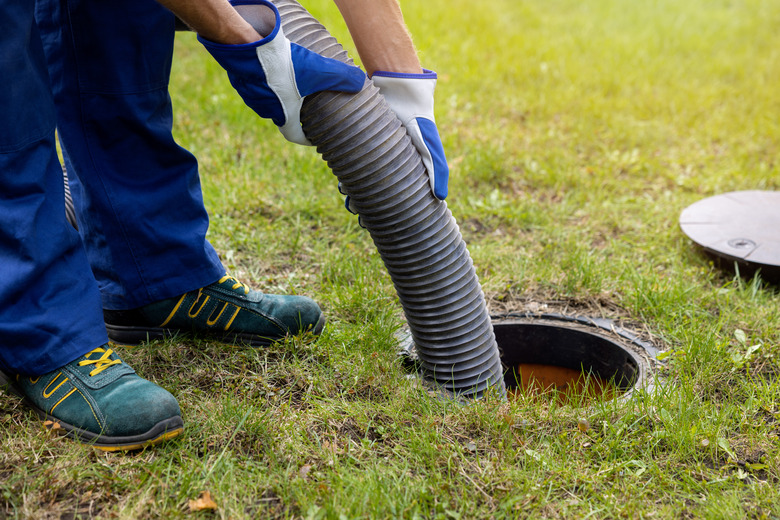How To Get Rid Of Bugs In The Septic System
We may receive a commission on purchases made from links.
Water bugs, black soldier flies, and drain flies are among the bugs that can infest your drains and septic system. While finding water bugs, cockroaches, and black soldier fly larvae in a septic tank is not unheard of, many bugs are actually living in and around the pipes and in decaying matter inside and outside the home. Getting rid of bugs in the septic tank, in drainpipes, and around the home requires a multipronged approach to ensure success.
Dangers of Septic Tanks
Dangers of Septic Tanks
Septic tanks produce gases as the microbes inside work to break down the sewage and wastewater from your home. These gases can prove lethal if you are overcome and pass out while attempting to inspect the interior via the access ports. Accidentally or deliberately entering a septic tank, whether it's one in current use or an abandoned and damaged unit, can prove fatal. Leave the inspecting and cleaning of the interior of a septic tank to professionals.
Clean Around the House
Clean Around the House
Black soldier flies (family Stratiomyidae), American and oriental cockroaches (family Blattidae), and sewer gnats or drain flies (Psychoda spp.) all thrive in locations where they find damp and decaying plant material, human and pet waste, or other food sources. While they may appear to come from the septic system, these pests may be entering your home via spaces around pipes, unscreened windows and doors, and cracks in the foundation.
Begin the cleanup by checking under and around sinks, toilets, showers, and other places where pipes enter the home. Caulk cracks and crevices to block pest entry. Clear kitchen shelves, vacuum, and throw away any infested foods. Store food in metal or glass containers.
Rake leaves, plant debris, and organic mulches away from the foundation to remove the hiding places and breeding grounds of these pests. An inorganic mulch, such as pea gravel or other decorative landscape rock, that slopes away from the foundation and extends 5 feet or more from the house, reduces pest habitats and has the added benefit of increasing defensible space in fire-prone areas.
Kill Flies in the Septic System
Kill Flies in the Septic System
While black soldier fly maggots thrive in septic tanks, sink drains, and decaying matter, the flies that appear around drains and septic tanks are more likely to be drain flies. These gnat-size flies flutter around drains because they feed and lay their eggs in the sludge that coats the inside of drainpipes, in sewage, and in moist areas like your septic tank. There are a number of drain fly killer products, but most insecticides are not suited for use in a home served by a septic system.
The best way to kill the flies appearing around sinks, drains, and air conditioning overflows is to scrub the areas where they are breeding. A long, slender brush that fits through the holes in the sink drain allows you to reach the sludge-coated interiors of kitchen, bathroom, and shower drainpipes. Coat the brush with dishwashing liquid or an enzyme cleaner, insert it into the drain, and scrub the sides of the pipe as far down as you can insert the brush. Rinse with hot or boiling water and repeat the scrubbing until the flies disappear. Do this once or twice a month to prevent a new infestation.
In the case of air conditioners and other areas where water drains, clean thoroughly according to the manufacturer's directions. Black soldier flies, drain flies, cockroaches, and other bugs may also be thriving in the septic system. Check the access port covers and around the septic system for damaged or cracked lids, wet spots, and other signs of moisture. The best way to eliminate these bugs is to clean and remove the areas where they breed.
Call in a Professional
Call in a Professional
Flies, cockroaches, and maggots may be the result of grease buildup, clogged lines, and/or an overfull septic tank. The liquids flow out into the drain field to evaporate or seep slowly into the soil, but the tank fills with scum and sludge, making it an ideal breeding ground and habitat for bugs. Consult with a local septic system professional and have your system inspected at least every three years for damage and leaks. A septic tank should be pumped every three to five years.
